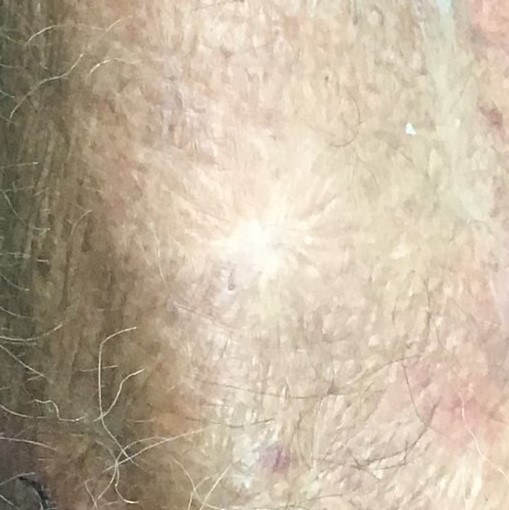
There are several ways to treat non-melanoma skin cancers such as basal and squamous cell skin cancers. Your doctor should ultimately be the one to help you determine what’s right for you, but knowing the procedures associated with each option will help you be an active participant in your treatment decision. Following is a brief overview of these treatment alternatives:
- Electrodesiccation and Curettage
- Simple Excision
- Mohs
- SRT
- Image-Guided SRT (IG-SRT)
Electrodesiccation and Curettage
Electrodesiccation and curettage (EDC) is a procedure performed in your doctor’s office. Your doctor will numb the affected area to begin, then use a curette (a spoon-shaped surgical instrument) to scrape away the top layers of skin. The surface of the wound is then heated with an electric current administered via a metal instrument or needle. Your doctor may repeat this process up to 2 or 3 times.
Simple Excision
An excision is a surgical procedure performed in an outpatient setting. First, the affected area is numbed with a local anesthetic. Your doctor will remove the cancerous skin lesion, as well as a margin of the surrounding healthy skin tissue. After the excision, the wound is closed with stitches. If the wound is too large to heal with stitches, a skin graft may need to be performed instead.
Mohs Surgery
Mohs surgery is also performed in an outpatient setting. Like the aforementioned treatment methods, the affected area is numbed with a local anesthetic before the procedure can begin. Using a scalpel, your Mohs surgeon will remove the cancerous skin lesion one layer at a time. Between removal, each layer is immediately examined under a microscope for cancerous cells. The surgeon repeats the process until no more cancerous cells are detected.
Superficial Radiotherapy (SRT)
Superficial Radiotherapy, or SRT, is a non-surgical non-melanoma skin cancer treatment for basal and squamous cell skin cancers. It is an outpatient treatment performed in an office setting. Using leading-edge technology developed by Sensus Healthcare, a precise and calibrated dose of low-level radiation is administered just below the skin’s surface to destroy the cancerous cells and preserve the healthy skin tissue that surrounds them.
Image-Guided Superficial Radiotherapy (IG-SRT)
Image-Guided Superficial Radiotherapy (IG-SRT) combines the SRT technology described above with ultrasound imaging. When you choose a practice that offers IG-SRT, your medical provider can view the treatment area while they are treating it, allowing them to target the cancerous cells with even greater accuracy.
Contact GentleCure to Learn More About Non-Melanoma Skin Cancer Treatment
If you would like to learn more about how IG-SRT works, please call GentleCure at 855-936-4411. Our skin cancer information specialists can answer any additional questions you may have and can counsel you to help you determine if IG-SRT is right for you. We’re here to help you make a well-informed treatment decision.








